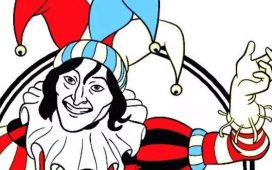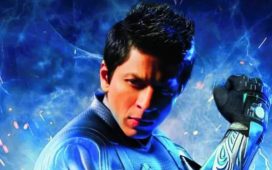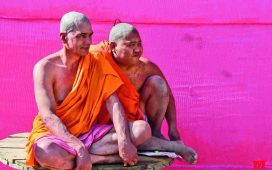
The ‘beard’ issue has been festering in my head for quite some time now. The heady partnership of mob and media may not have picked up on it yet. But a recent conversation about ‘How on Earth did we fix the way our gods look?’ – including the remarkable transformation of the West Asian, brown-skinned, dark-haired Jesus into a blond Haight Ashbury hippie dude – made my salt’n’pepper thoughts on the matter bristle again.
One thing’s for sure – as much as one can be sure about things like these: it’s certainly unlikely that (wo)man created god in her/his own image. You only have to see your neighbours. Unless, that is, your neighbours’ ancestors couldn’t stand the idea of normal-looking devis aur devas, so had them ‘made’ super-real/surreal, desi Barbie-style perfect?
All standard depictions of an adult Ram show him without a trace of facial hair. It was in the late 19th-early 20th century that the ‘modern’ depiction of Ram – not podgy, not lanky, but with the right set of abs and air of benevolence that many IIM toppers have – ‘solidified’ with the mass market production of affordable prints rolling out of Ravi Varma Fine Art Lithographic Press from 1894. For the first time, thanks to master of (Western classical figures-inspired) mytho-art Raja Ravi Varma, anyone and everyone could afford god in his or her home.
This clean-shaven adult Ram, ubiquitous in millions of households by the early-mid 20th century, became the popular choice for Indian Idol. But Ram was not always the chikna we know him as so well today.
Ancient and medieval equivalents of today’s producers of TV mythologicals certainly preferred the ‘clean Ram’ look when it came to depictions in stone and other 3-dimensional materials. (Not everyone liked the extra hard work like Michelangelo, who depicted Moses in his sculpture with detailed heavy ivy-league, octopoid face-tresses.) But the painter, coming in later, didn’t have such restrictions to Gillette things away. The artists commissioned by Rana Jagat Singh of Mewar in the mid-17th century to create an illustrated Ramayan certainly didn’t mind putting a thick twirl on the upper lip of a blue-skinned Ram. To modern eyes, this ‘version’ of Ram looks more like Indrajit (Ravan’s fine-looking and wonderfully named, but left unsurnamed son) than Ravi Varma’s upstanding Citizen No. 1. But the Mewar Ramayan isn’t the only one to describe Ram with facial hair. Pothi (sacred text) traditions in Kannada of the 17th century, to give one example, describe a bearded Ram. Jump a few centuries, and in her 2008 history of the comic book series, Amar Chitra Katha, The Classic Popular, Nandini Chandra writes about how Ram Waeerkar, one of the main illustrators in the ACK team, had first drawn Ram with a beard based on Pothi texts. ‘He was asked to redraw his Ram according to the Ravi Varma style,’ writes Chandra, who goes on to quote art historian Christopher Pinney on how Varma transformed ‘the Indian imaginary from a realm of fantasy to a historicised realist chronotope (read: grounded in time and location)… and ‘gave’ India its gods in a real form.’ De jure mythology became de facto history.
Interestingly, because of Waeerkar’s personal fondness for Tarzan comics – especially artwork of the 1960s-70s by Russ Manning – Ram with the top-knot that we see in the 1970 published ACK comic book edition, Rama (Vol. 504), later picked up by those going for a more virile, bow-wielding, sinewy-muscled chap, became the template for North India’s favourite deity today. Those with more pacifist leanings have the option of the closer-to-Ravi Varma version transmitted by Ramanand Sagar, in his 1986 78-episode TV serial with Arun Govil as a podgier, softer-at-the-edges Ram. Muscular Ram, in TV shows or posters, is, of course, today’s preferred avatar.
As for the issue of the beard, let me shave it for another day. For, it doesn’t really matter at all. Since it’s us who decide how we want our gods to look- more human than human.









